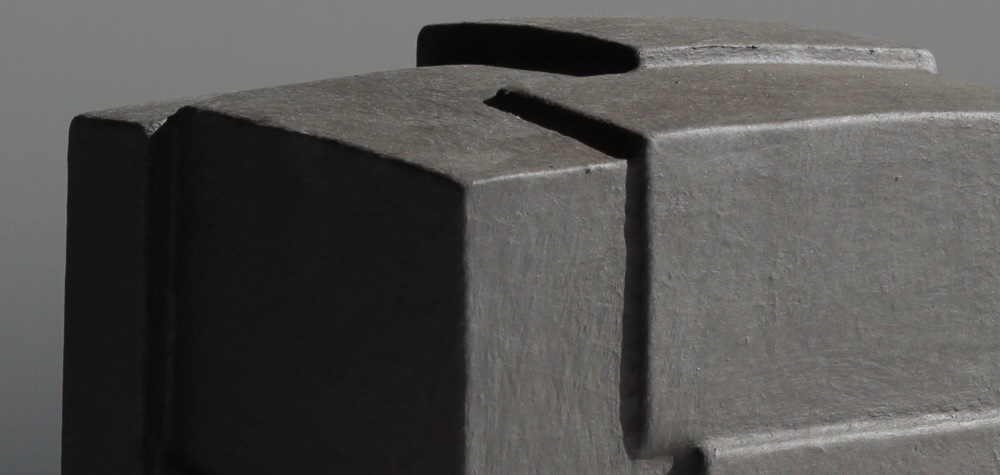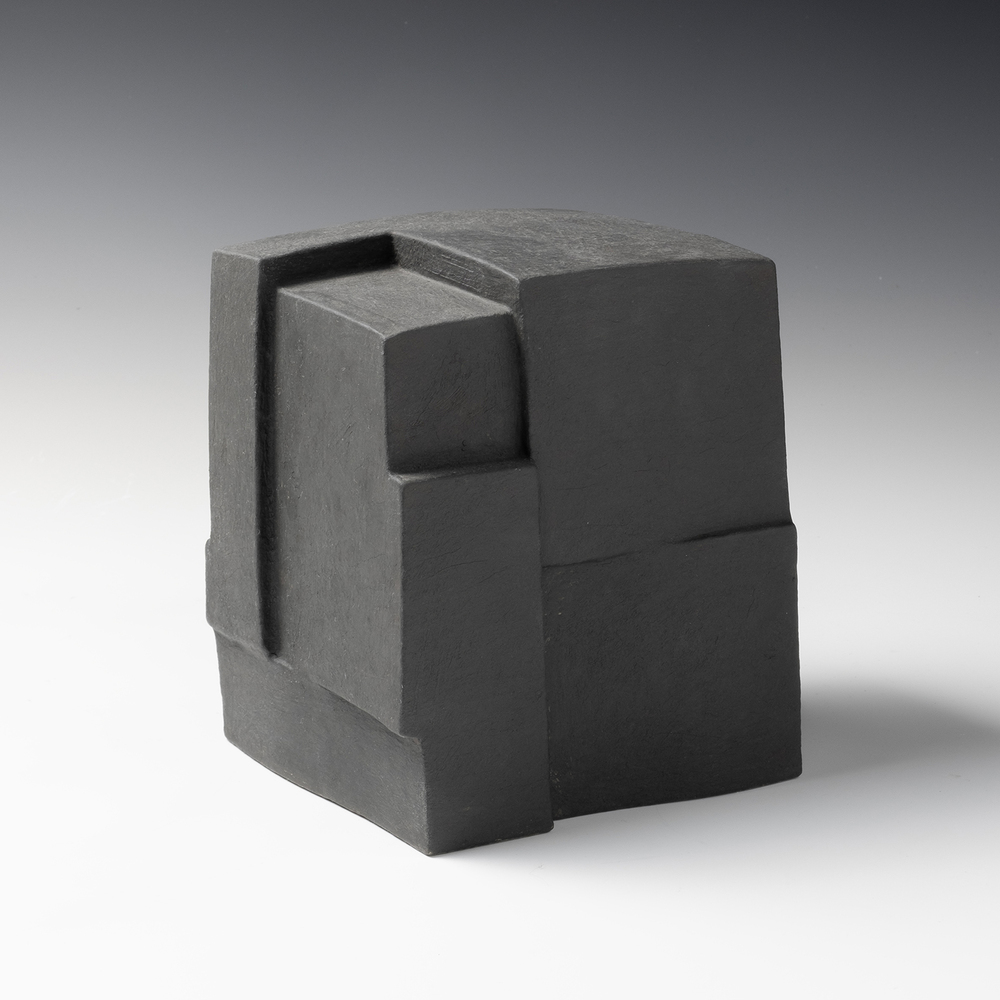Ken Eastman
Ken Eastman (b. 1960, UK) was trained at Edinburgh College of Art before completing an MA at the Royal College of Art. He creates intriguing, multi-faceted and undulating vessels. Variations of texture and smoothness sit side by side, and naturalistic forms run into angular architectural lines. With no set viewing point, his almost surreal structures have the seemingly impossible ability to shift and alter their appearance. Eastman has won many prestigious awards in the field of the ceramic arts, including the Arts Foundation Fellowship in Ceramics in1998-99 and Gold Medal at the World Ceramic Biennale, Korea in 2001. His work is held in numerous public collections in Japan, the USA, Canada, Australia, the Netherlands and the UK.
Ken Eastman is now one of Europe’s pre-eminent hand-builders, and on the simple evidence of this show, one of its most quietly ambitious. I say ‘quietly’ because this deeply thoughtful and least showy of potters works intensely and painstakingly on small groups of pieces, carrying through ideas and explorations in series, but each object is quite independent and autonomous, quite distinct in mood. He makes forms over many months, gradually building up, modifying and altering, studying and reconsidering from all angles, scrutinising the pleats, flaps and flutes of clay, the curves and projections and their relationships. This is probably his most complex sequence so far. As the surfaces and colouration have become more austere, the palette monochrome (but with subtle variations, if you look closely), the shapes have a new convolution, a pulling together of seemingly disparate parts. They remind us of forms in nature as well as the urban environment. Eastman creates an interesting interplay between organic and human-made traces, polished and smoothed by touch and the elements. This is perhaps his most anthropomorphic work too. Pieces like ‘About Time’ and ‘Distance Coming Closer’ have their own contrapposto, their own slightly twisting, centrally-generated dynamic. One is reminded of other sculptures, for example Boccioni’s ‘Development of a Bottle in Space’, the sense of an object opening out and interlocking with its surrounding space, emanating energy and flux, the innate tensions in apparently still objects. There is certainly a Cubist aspect, an analysis of parts in operation. There is a fluid plasticity too, the planes, blocks and sections shifting and interacting with the air and light in different ways, the nature of these shapes changing with the atmosphere. These are not easy works. That sense of continuous re-drawing and re-shaping is an implicit part of the ‘finished’ sculpture, an investigation of endings and beginnings, of junctures and re-directions. No surface stands still. The sturdy black ‘Here and Now’ is strikingly unsettled, geometric and angular in parts, and sensuously body-like in others. There is a sense in places of the spine under the skin, both taut and soft, qualities most clearly seen in the very corporeal ‘Walk with Me’. The surfaces here are crumpled and indented by gentle pressures, accentuated by precision of shadow and ‘the cut of the light’, to borrow Jeremy Hooker’s memorable phrase. - David Whiting




